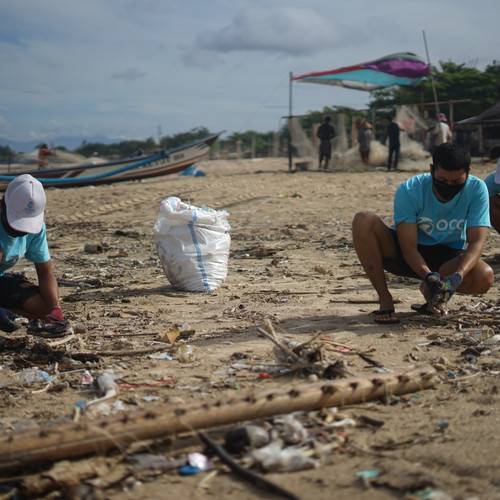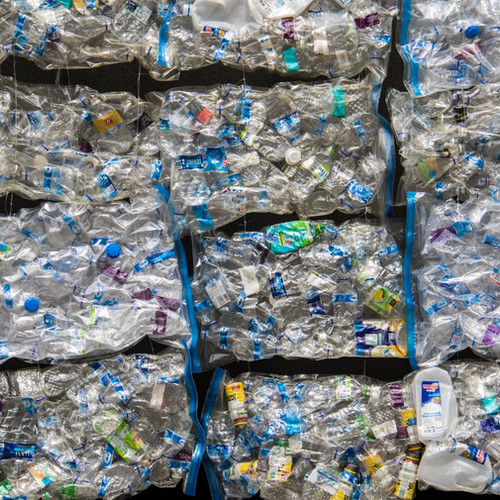What are plastic credits?
Plastic credits are units of measure representing a specific quantity of plastic that has been collected from the environment or recycled. Credits are a way for individuals and companies to invest in regional collection and recycling infrastructure, with the aim of reducing plastic waste. They represent a specific quantity of plastic that has been collected from the environment, or recycled.
The Plastic Problem
With an estimated 8 million metric tons of plastic entering the ocean each year, plastic pollution has become a global crisis. This plastic pollution not only hurts the environment, but also threatens public health and the economy. One way to help address this problem is through the use of plastic credits.
Carbon Credits vs. Plastic Credits
Plastic and carbon credits are similar in that they both represent a unit of measurement that can be used to offset environmental impact. However, there are some key differences between the two. First, carbon credits represent a reduction in greenhouse gas emissions, while plastic credits represent a reduction in plastic pollution.

Why use plastic credits?
The world is facing a plastic pollution problem, with an estimated 8 million metric tons of plastic entering the ocean each year. Governments and businesses are under pressure to reduce their plastic footprint, and one way to do this is by investing in infrastructure that will enable increased recycling rates.
How do plastic credits work?
One credit represents one kilogram of plastic collected or recycled and companies or individuals can purchase credits, which supports the infrastructure of regional collection and recycling. For example, if a company wanted to offset its plastic footprint, it could buy plastic credits.
Benefits
They offer a way for businesses and individuals to invest in infrastructure that will help reduce plastic pollution. Credits also provide an incentive for people to collect and recycle plastic waste. Another advantage to plastic credits is the ability to solve local plastic pollution problems.
The world is facing a plastic pollution problem, with an estimated 8 million metric tons of plastic entering the ocean each year. Governments and businesses are under pressure to reduce their plastic footprint, and one way to do this is by investing in infrastructure that will enable increased recycling rates.
Disadvantages
There are a few challenges that need to be considered when developing a plastic credit system.
First, they must represent actual reductions in plastic pollution. To do this, there needs to be a way to track and verify the plastic that is being collected or recycled.
Second, it is important to ensure that the credits are tradable and transferable. This will enable businesses and individuals to easily buy and sell credits.
Third, it should be ensured that they are affordable for businesses and individuals. If the price of credits is too high, companies and individuals may not be willing to purchase them.
Fourth, it is important to ensure that they are accessible to businesses and individuals. If the system is too complicated, companies and individuals may not be willing to use it.
Plastic Credit Systems

One example is the Marine Debris Exchange Program, which was launched in 2017 by the Ocean Conservancy and the Environmental Defense Fund. The program enables businesses and individuals to buy and sell credits that represent actual reductions in marine plastic pollution.
Another example is Plastic Bank, which was launched in 2014. Plastic Bank operates in Haiti, Indonesia, Brazil, and the Philippines. The company rewards people for collecting plastic waste, which is then sold to companies that use the plastic to create new products.
United States
In 2017, the Ocean Conservancy and the Environmental Defense Fund launched the Marine Debris Exchange Program, which enables businesses and individuals to buy and sell plastic credits that represent actual reductions in marine plastic pollution.
In 2018, Congresswoman Carolyn B. Maloney introduced the Break Free From Plastic Pollution Act, which would establish a national plastic reduction program that would include a plastic credit system.
China
In 2019, China launched its system as part of its National Sword Policy. The policy is designed to reduce plastic pollution in China.
Under the system, companies that produce plastic products and packaging can earn credits by meeting certain recycling targets. The credits can then be used to offset environmental fines or to finance environmental projects.
Plastic Footprint
A plastic footprint is the total amount of plastic that a person or organization uses. A plastic footprint can be measured in terms of the weight of plastic products and packaging that a person or organization uses, or in terms of the number of plastic items that a person or organization uses.
The average American has a plastic footprint of about 109 pounds (49.8 kilograms) per year. This means that the average American uses about 109 pounds (49.8 kilograms) of plastic each year.


Hello I was just wondering if there was anyway to monitor the market price for Plastic credits? Please let me know if this is possible.
Hi Nathan, thanks for your question. It really depends on the location the plastic credits are being generated, particularly given the market is far less-developed than carbon credits. Please feel free to contact us directly at info@xeero.io if you would like to discuss this further.